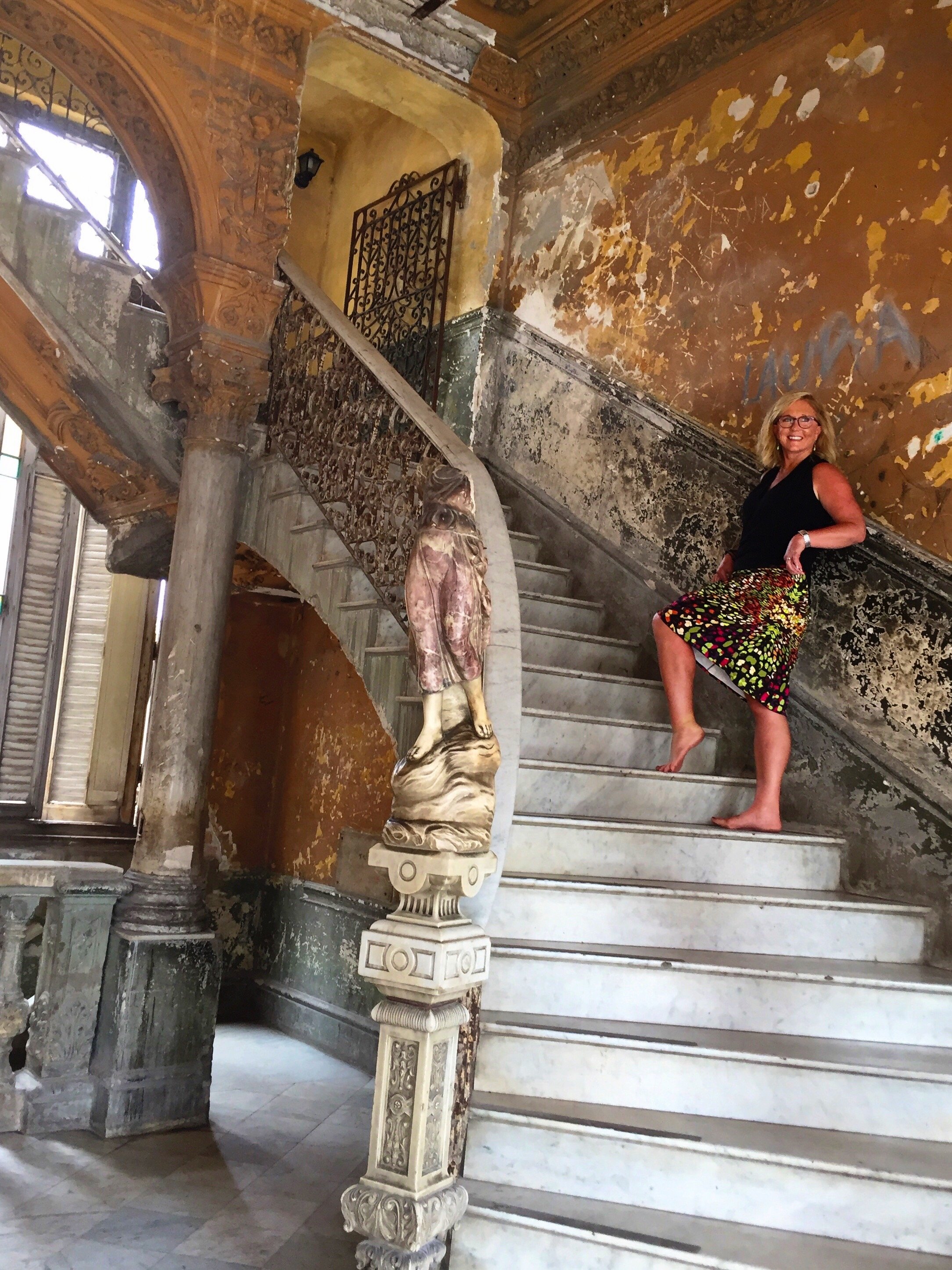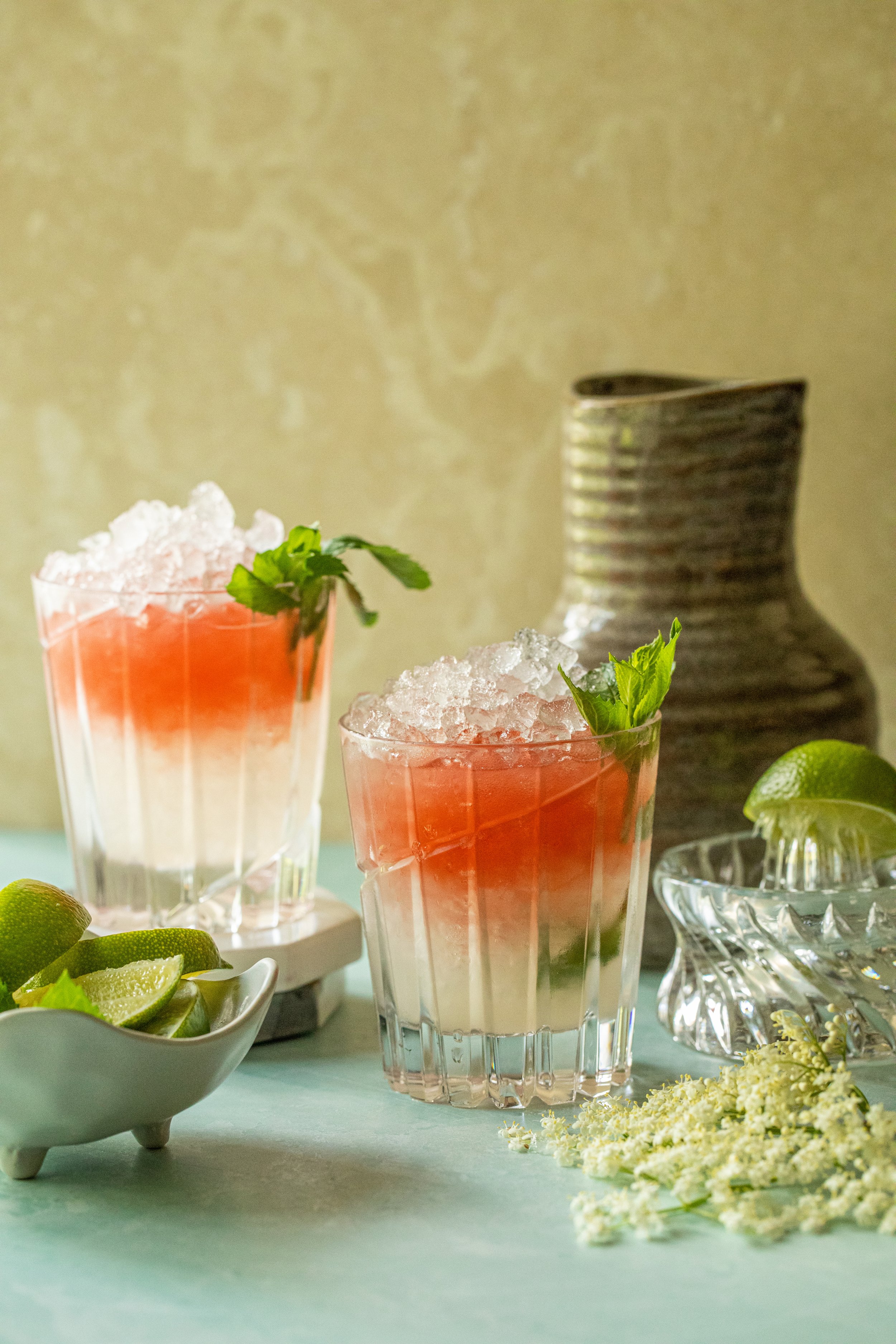Daiquiris, Cigars, and a ‘55 Chevy: How I explored Cuba
It began with a visit to a Cuban restaurant in Miami years ago when I experienced authentic Cuban cuisine and the warm, welcoming hospitality of the Cuban culture. Such was the impact of that visit, I knew that I must go learn more about the food and people of Cuba. So, I grabbed my go-with-the-flow fellow traveler (and good personal friend), Cindy, to experience our own Cuban adventure.
We hired Access Trips, a U.S. based culinary tour company, that arranged a Cuban tour that focused on Cuban culture, food sources and food preparation. After weeks of obtaining the necessary travel documents, Cindy and I flew to Miami and enjoyed two nights in South Beach, Miami, then departed to Havana early one morning. Within an hour, we were meeting our guide, Acaris, a native Cuban who warmly welcomed us with her engaging personality and humor. Acaris spoke English beautifully and though she was a tour guide of only a few months, she answered our questions and accommodated our requests – even for unscheduled tour stops.
One of the qualities I admire most in a traveling companion is someone who embraces new experiences with an open mind and spirit. Cindy’s eagerness to enjoy all parts of the Cuban experience matched my own. Our enthusiasm was noticed by Acaris who dubbed us, “the women with the iron stomachs” because of our willingness to try all the complexities of Cuban food. We laughed and took the comment as a compliment from a new friend.
Our driver for our week-long visit was Antonio or “Tony”. He proudly drove us in his ’55 Chevy given to him by his grandfather. Lucky for us – and a source of great pride to Tony-- this gleaming orange and white ride had air conditioning, a rarity in Cuban even though the heat and humidity are intense. Although Tony did not speak English, it wasn’t necessary as he communicated the warmth of the Cuban spirit through his kindness and hospitality. Every door was opened for Cindy and me and we never became thirsty: Tony always had a cool bottle of water for us. After a few days with Tony, Cindy and I gave him an Oklahoma City Thunder tee shirt and white mirrored sunglasses which he wore with pride.
There are many hotels in Havana, yet it is more economical to rent a private home or apartment. The house where we stayed faced the Malecon, Havana’s sea wall that extends over 8 kilometers, with a stunning view of the Gulf of Mexico. Here, we were made to feel comfortable with amenities such as air conditioning in our bedrooms, and morning breakfast of fruit and bread prepared each morning by the housemaid.
Cuban restaurants are usually owned and operated by the government and they offer less personal service and generally lower quality food. The private restaurants, called Paladares, reflect the spirit of the Cuban people with uniquely decorated interiors and meals prepared with fresh ingredients and thoughtful preparation. Atelier, located in Havana, makes its home on the second floor of a colonial Spanish home. We enjoyed our meal on the veranda, complete with hand crafted linens from Trinidad and elegant drinking glasses reminiscent of my grandmother’s era. Such delightful touches gave both Cindy and me the comforting sense that we were among friends.
Our meal began with malanga fritters dipped in honey. Then, a signature dish, ropa vieja which featured beef simmered in cumin and red wine, served with rice and beans. In Cuba, “rice and beans” is commonly called Moros y Cristianos or “Moors and Christians” a nod to Cuba’s rich cultural and political heritage. Our evening ended with cool, frothy daiquiris – refreshing on such a hot night.
La Guarida, one of Havana’s most popular upscale restaurants is located at the top of a majestic building that is currently under renovation. This building was the set location of the “Fresa y Chocolate” film by Senel Paz. La Guarida’s sweeping marble staircase led to the restaurant, where the veranda was used to dry restaurant linens in the fresh Cuban air. This casual elegance juxtaposed with their rich and luxurious food, a reminder that Cuba is an interesting mix of cultures, people and tastes. The food was excellent, my favorite being the simple tuna taco appetizer washed down with tropical fruit sangria.
The highlight of our dining was in the home of Pototo who works for Access Trips. He treated us to a meal prepared by his wife of creamy lobster pasta salad, grilled beef ribs, chicken croquettes and corn fritters. As a special treat, we met Roly, a bartender at the famous La Floridita Hotel in Havana. In his forty years there, Roly created Cuban daiquiris and mojitos and he shared his knowledge with me and Cindy, who celebrated her birthday with Rory’s specially made “Chiclet” daiquiri that tasted like chewing gum. All gum in Cuba is called “Chiclets”, so a new drink in honor of Cindy was created!
During our visit to Cuba, we dined at private organic farms. The first farm was nestled in the Vinales Valley, three hour east of Havana. When we arrived, tourists were walking through the gardens and many were seated at patio tables. We quickly sat down and food arrived, family style. Platters of roasted vegetables, stewed meats, fried croquettes, grilled fish, and the creamiest flan I’ve ever experienced made our meal. From here, Cindy and I visited a nearby tobacco farm in Vinalaes Valley, famous for the world’s best tobacco. Many celebrities travel to Vinales to stock their humidors and I must admit, I enjoyed my first Cuban cigar.
Artemisa, located just outside Havana, is owned by Fernando Funes- Monzote. He calls his sustainable, organic farm, Finca Marta where he keeps bees, raises cattle and grows acres of produce. Additionally, he converts cow manure to methane gas to fuel his farm equipment and kitchen. His wife, Claudia, created a tasty lunch that included crispy pork roast encrusted with herbs. Arugula, mustard greens dressed with dill sauce, and roasted vegetables including sweet potatoes and black eyed peas rounded out our meal. While we dined, Fernando smoked a cigar and shared about his recent visit with the US Secretary of Agricultural and US Senators, and his passion for sustainable farming.
One of my favorite memories is of La Fontana, a paladar restaurant in Havana where we joined Chef Pedro for a cooking lesson. Chef Pedro, a Chinese Cuban, showed us how to create seafood paella and eggplant and tomato ragu. Acaris, our guide interpreted for us, and Chef Pedro explained how he enjoys using celery in his seafood dishes to bring out the subtle flavor of the fish. Pedro’s kindness and humility was evident in everything he did, including asking me about my ideas and experiences making paella and seafood. As we worked together, I noted Pedro really wanted an olive pitter, a gift I intend to send him as a token of my appreciation for all that he taught me. Interestingly, olives are not grown in Cuba yet are imported for use in native dishes, including ropa vieja.
Cindy and I did more than eat. We also spent many hours learning about Cuban history and culture. We were particularly interested in Cuban art: colorful paintings, jewelry and ceramics from local artists. We purchased some for our return trip home at the Victor Manuel Gallery in Old Havana.
The 500-year-old city of Trinidad is not to be missed on any trip to Cuba. About five hours from Havana, the streets are made of large, uneven stones, deeply worn from the many years of donkey carts which still make their way through the narrow streets. Most of the small homes face the street side and sell local clothing and souvenirs. Perhaps best known for its beautifully embroidered linens and crochet, Trinidad is home to many fine artisans and craftsmen and we purchased several tablecloths there.
At La Piragua, near Playa Ancon we enjoyed fresh fish, fried whole with sweet potatoes, plantains and more Moros y Cristianos. Here, we waited for Tony to return with our snapper and yellowtail that we watched being caught by early morning fishing. Also in Trinidad, where we enjoyed our last night in Cuba, we had vaca frita (ropa vieja fried without sauce) and platanos maduros (sweet plantains cooked in butter). Our dining room was the one room that enjoyed air conditioning, for which we were most grateful. As we left the restaurant, we noticed dozens of tourists waiting for tables.
Departure day found us in Cienfuegos, a city set on a bay and a UNESCO site, known for its remarkable neoclassical architecture, including their own Arc de Triunfo, built as a tribute to Cuban independence. After a brief walking tour of Hotel Jagua, Tony and Acaris drove with us to the airport where we departed for home with the promise to return to our new Cuban friends.
All travel changes me but this trip particularly so. Perhaps it was the safety that I felt in a place that has been so rife with conflict. Perhaps it was the warmth of the people that have so much to share and yet are so proud of their country and culture. I think it is the sense that I found people so much like myself who share food with others and in doing so, share themselves.
























